
Table of contents
- Important for a natural pond
- location and circumstances
- Ideal shape and size of a natural pond
- Create a natural pond
- Plant natural pond
- Conclusion
You have a "hollow" in the garden, solid clay soil and fill in rainwater. This is basically a natural pond, even if it takes a lot more to create and maintain it.
Important for a natural pond
- Loamy soil is ideal as a substrate, even if the pond is never 100% watertight
- Be sure to use nutrient-poor soil
- No pond soil
- No garden soil
- No plant substrate
- Only use lime-free sand (quartz sand) or gravel
- Rainwater is best
- Absolutely no fertilizer
- Only place plants in containers with sand, no pond soil
- Only cover the edge of the pond with sand
- Never use filter systems, circulation pumps or fountains, they do not belong to a natural pond
location and circumstances
A low groundwater level is ideal for a natural pond. Only the pond floor and the corresponding water terraces have to be formed here. On the other hand, anyone with a high groundwater level but strong clay soil can easily create a natural pond. A regulated water exchange also takes place here. Groundwater and rain determine the water level in the pond. This is the ideal natural pond. Anyone who does not find both naturally can help, but with a lot of effort and also some costs. The pond bottom can be sealed naturally and in an environmentally friendly way. A layer of tamped clay 40 to 60 cm thick is applied. This does not offer 100 percent protection against leakage, but it usually works very well. However, what is important if you want clear water in the pond is to apply a 20 cm thick layer of nutrient-poor sand to the clay.
- Low water table is ideal for natural ponds
- Strong clay soil as well
- Alternatively apply a thick layer of tamped clay
The lighting conditions are important for a natural pond. You have to be very balanced. Sun is good, but there should also be shady areas, at least part of the time. Plenty of sun is particularly important in spring so that insects and amphibians can develop well. On the other hand, floating leaf and floating plants also need partial shade or even shade.
- Areas that are as sunny, semi-shady and shady as possible
- Shade can also be created artificially, sun not
Ideal shape and size of a natural pond
The shape doesn't matter, the main thing is that it's natural. A circular or strictly rectangular or square pond is not natural. A kidney-shaped pond with a bridge over the narrow spot looks very nice. From there, the creatures in and around the pond can be well observed. In order to be able to carry out maintenance work and also thin out plants, it is advantageous to have an entry point from which you can safely climb into the pond. Different depth zones are also important, one for marsh plants, one for shallow water plants and one for deep water plants. It is important that a shallow water zone is particularly sunny in spring for the expected frogs and their spawn.
- shape unimportant
- Natural shape, not circular or strictly rectangular
- Entry point advantageous
- Different terraces for plants
- Sunny shallow water zone
- Shallow zones for animals that want to get out of the water
When it comes to size, the main thing that matters is depth. A natural pond should be at least 80 cm deep, 100 cm is even better. This ensures that amphibians and insect larvae that hibernate in severe winters do not freeze to death. Of course, the pond can also be deeper. More than 180 cm are not necessary.
- size unimportant
- Depth matters
- At least 80 cm, better 100
- At least 20 cm wide edge of the pond, preferably more
Tip:
No matter how large the natural pond is, it must be secured. Either you fence the entire property or especially the pond. It must be prevented that someone comes to harm. Children are magically attracted to water and there are always tragic accidents when they fall into the water. As a garden owner, you are liable for this.
Create a natural pond
Of course, a plan must first be drawn up of what the pond should look like. The floor plan can be marked out with a thick cord or you can use sand to mark it. Then the pond is dug up. The edge of the pond should be at least 20 cm deep and 20 to 100 cm wide, depending on the size of the pond. The floor must be the same height all around. The best way to check this is with a hose scale.
- create plan
- Mark pond outlines
- dig pond
The excavated soil can be used to design the garden in small quantities. In the case of large ponds, however, it is usually too much and must be removed. Since very few gardens have a corresponding clay soil, it can be assumed that a layer of clay must be applied. Since this should be up to 60 cm thick, you have to dig deeper accordingly. Of course you have to have the clay delivered to you. It is important to use a protective grid at the bottom of the pond so that mice and other animals cannot undermine the soil under the pond. The water would run out there. This must be prevented before the layer of clay is applied. This should be applied in layers. In between, we keep wetting and tamping, so that the ground is absolutely waterproof. The clay must not be allowed to dry during this entire period, because cracks form quickly and it is not possible to achieve impermeability. The layer in the middle of the pond only needs to be about 50 cm thick, but it should be at least 60 cm on the shallower sides, where the risk of drying out is quite high. The thickness should then be reduced to 30 cm up to the edge of the bank. Once the layer of clay has been applied, it has to dry.
Tip:
Clay or unfired clay bricks have also been commercially available for some time. They make sealing a natural pond easier and easier to transport. A pond fleece is placed in between to level out any unevenness that can occur when the bricks are compacted. Laying out the wet bricks is exhausting, because the dry pieces weigh 16 kg. The bricks are laid out tightly and then compacted with a vibratory shaker. A fleece should be placed on top of that and then the sand or sand. lime-free gravel. The fleece ensures that the gravel does not press into the clay mass. Building this version is much more difficult than working with loose clay, at least that's what the experts say.
If the clay has dried well, theoretically water can be let in. It is important to only use rainwater. Of course, this has to be collected beforehand or you can run a rainwater pipe from the roof into the pond. However, it is beneficial to first lay a layer of sand over the clay. This prevents the plants from coming into direct contact with the nutrient-rich clay. This leads to very strong growth of the plants. The sand also prevents the water from becoming cloudy. A pure clay pond always has cloudy water. If you don't mind, you can leave the floor as it is. If you prefer to see something in the pond, bring sand into the pond. A layer about 20 cm thick is ideal. The aquatic plants can also be used right at the beginning, so you don't get wet feet.
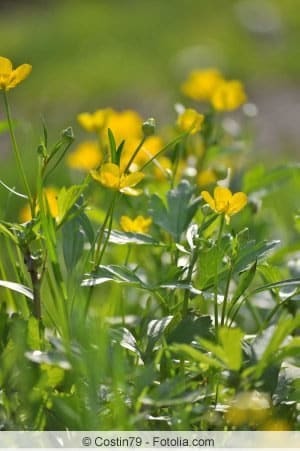
Plant natural pond
When planting is not so much to consider. The right plants must be selected for the individual zones. In a natural pond, of course, there are no exotic plants, but local ones. In fact, nothing needs to be planted. Sufficient growth settles in quickly. With them you can be absolutely sure that they are site-appropriate plants that get along so well. Wild plants do best in a natural pond, so it is better to avoid the cultivated forms. Reed can thrive in water up to a meter deep, but it also stands well shallower. You have to be careful not to spread the plants too much. Cattails have similar requirements, but spread less.
deep water zone
- White water lily
underwater plants
- chickweed
- waterweed
- fir fronds
- Teichmummel (only for larger ponds)
shallow water zone
- buckbean
- frog spoon
- rushes
swamp zone
- marsh marigold
In a natural pond, less is more. Many plants spread strongly and quickly, and a large part is simply overgrown. It's better to plant fewer plants, because wild plants also naturally take root. The plants are placed directly in the sand layer. They root into the clay and then they are solid. This has one disadvantage, it is extremely difficult to get them out again. With reeds and cane plants, tearing them out can even cause the pond to leak because a lot of clay is removed. It is therefore important to think carefully about which plants to use. Alternatively, plant baskets can be used and buried, even if they don't really fit into a natural pond. Do not use soil, put it in the sand or gravel without a substrate.
Conclusion
A natural pond is a great thing, but it does not only have advantages. It is important to get the clay very, very solid and free of cracks and to add a thick layer of sand to avoid brown puddles. Otherwise clay is a natural building element and the pond offers many creatures a natural habitat, without any chemicals. However, you have to reckon with the fact that the construction will take some time and may be expensive and that a pond that has not been installed professionally can also leak. In addition, the plant growth is greatly promoted by the clay soil, the plants quite like to overgrow.
It is important that no fish come into the pond. Firstly, no amphibians would then have a chance to survive and secondly, the water would become very dirty and the pond would silt up faster. A natural pond does not have a filter system. This makes it clear that he does not have eternal life either. The water will become less and less. The larger the pond area, the higher the life expectancy of the pond. A pond of about 10m² will silt up after about 5 years, a 50m² after about 20 years and a 100m² after about 30 years.
 garden editorial
garden editorial I write about everything that interests me in my garden.
Learn more about creating a pond
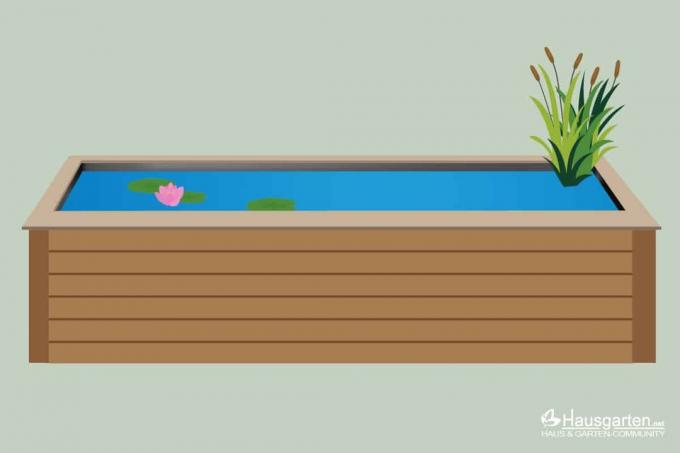
Build a high pond yourself: 15 tips for creating it yourself
A laborious excavation can be avoided with a raised pond. If you want to build and create it yourself, you should pay attention to numerous details. With the right tips, the project runs smoothly and long-term joy is guaranteed.

Build a duck coop yourself 7 tips for a duck house
Building a duck coop yourself is essential if you want to keep ducks yourself. But a protective shelter is also a practical and valuable aid for wild ducks. With our tips for building a duck house yourself, it's easy.
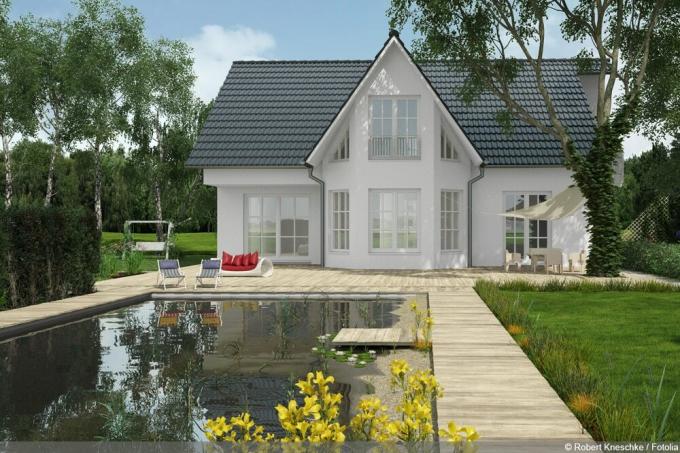
Make a swimming pond out of a garden pond: rebuild in 8 steps
Gardeners with manual skills transform the pond into a natural swimming paradise for the whole family. Thanks to the living sewage treatment plant, the private water world works in an exemplary manner without chemicals. This guide explains how to convert your garden pond into a swimming pond in 8 steps.
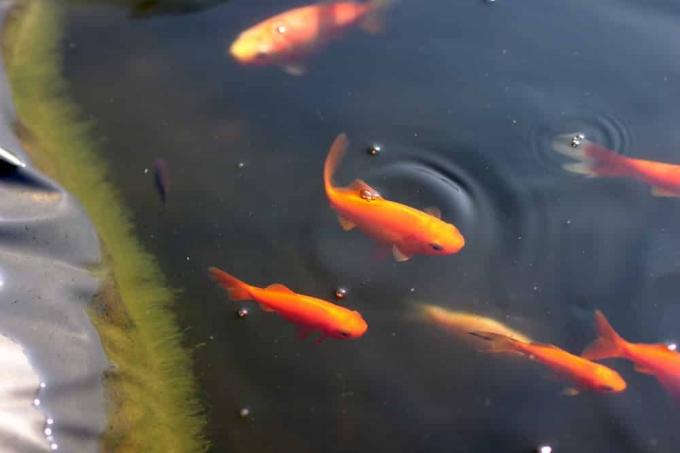
Fasten the edge of the pond: this is how the pond liner gets hold on the pond bank
Filled with water, maybe a few fish in it and attractively planted, a pond is a small piece of paradise in your garden. In order for this to remain so for a long time, the correct attachment of the edge and the pond liner is crucial.
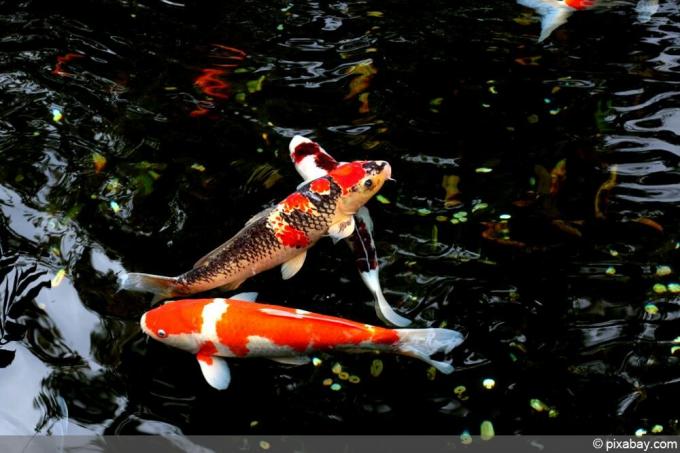
Creating a koi pond: requirements for size and filter system + costs
Kois are not only particularly noble, but also very demanding fish. Because the animals have certain requirements for their habitat, which must be taken into account when creating the koi pond.
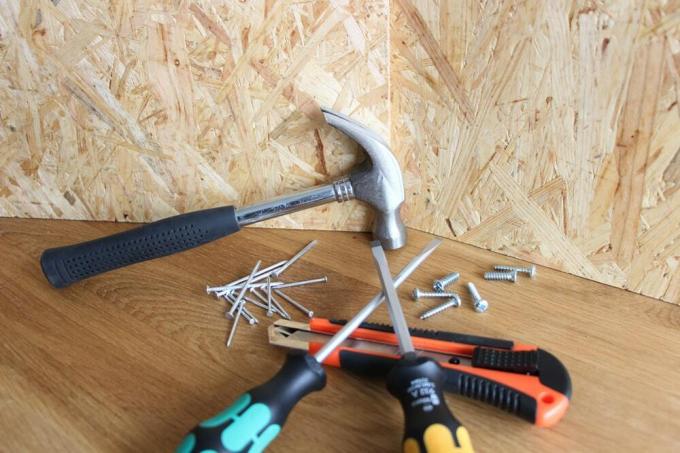
Build your own indoor pond – instructions in 10 steps
There are big differences in indoor ponds. A lot is possible, starting with plastic shells, such as those used in the garden, through brick and tiled ponds similar to a bathtub, to liner ponds in a wooden frame. Anyone who has never dealt with indoor ponds will be amazed at what some people come up with. Of course, the vessels can also be used for rooms, which are referred to as mini ponds or balcony ponds.
